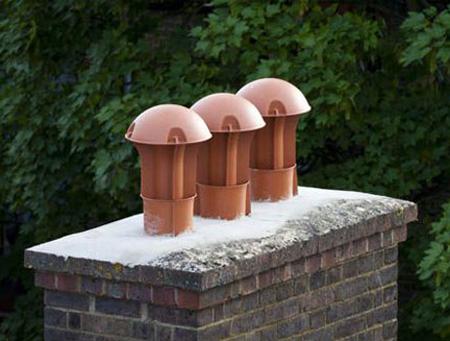The most recent sign of Britain’s ‘cost-of-living crisis’ is rarely out of the headlines; reports of damp and mould in social housing and privately rented properties are on the increase. A key contributing factor to poor indoor air quality is that tenants have been struggling to afford to heat their homes to a reasonable temperature while maintaining adequate levels of ventilation.
Considered only a marginal issue for landlords up until last winter, social housing providers are now facing an increasing number of legal challenges from tenants as a result of a new condensation ‘damp phenomenon’. The problems surrounding damp and condensation, such as asthma, allergies and overall negative impact on well-being are said to be a direct result of rising energy bills and increasing levels of fuel poverty.
Once damp and mould problems have presented themselves, remedial costs can be significant. However, landlords and housing associations can easily prevent such issues arising, by acting early to improve the condition of their stock. Adopting simple measures such as additional insulation and natural ventilation can bring the damaging levels of humidity under control and improve indoor air quality within houses. This will have a positive effect on both the health of occupants, as well as the building fabric itself.

PVHR in action
One such strategy is PVHR (Passive Ventilation with Heat Recovery), a low-cost solution that can easily fit in both refurbished properties and new-build houses. PVHR pioneers Ventive manufacture passive ventilation systems with heat recovery which are designed to deliver all the fresh air needed within a home, with zero running costs and minimal heat loss. They are already working with a number of major UK Housing Associations who facilitate high-quality social housing for rent and sale.
Ventive was recently asked to help solve an ongoing problem in a rented property in Camberley. A mother and young baby lived in the semi-detached house, which had been subject to concerns over condensation and recurrent mould growth within two rooms of the property. Despite routine maintenance and remedial works, the issues seemed to reoccur. This was having a negative and distressing impact on the residents, including early asthma symptoms and skin irritations for both mother and child.
Ventive arranged to trial their unique Passive Ventilation with Heat Recovery systems in the property to demonstrate how their non-intrusive ventilation solution would help solve the damp and condensation problems.
Since the Ventive S and Ventive S+ systems were installed, the mould and condensation problems have not returned and the health and well-being of the residents has improved significantly.
Ventive products are designed to breathe fresh air into a house either through the existing chimney, where Ventive S replaces the chimney pot with a cowl, or via a new roof penetration and a short flue section with the Ventive S+ variant, if no suitable chimney is available. Both Ventive S and S+ incorporate the same cassette that features an innovative, patented and incredibly efficient heat exchanger.
Tom Lipinski, Founder and Technical Director from Ventive, comments:
“As housing stock (new build and retrofit) becomes more energy efficient, even ‘greener’ buildings can be susceptible to trapping humid air in which toxic mould can spread, thus contributing to a negative impact on the health and well-being of occupants. Having worked with a number of UK Housing Associations, we have seen first-hand the problems that arise from residing in damp and mouldy accommodation.”
“Once damp and mould has set in, so will the accompanying health issues that surround them. We have developed passive ventilation with heat recovery systems that effectively breathe fresh air back into homes without the use of electricity. We have combined the simplicity of passive-stack that boasts the heat recovery performance of a powered mechanical device – but without the associated cost, maintenance and energy use.”
Ventive and the Carbon Trust are holding an Industry Roundtable on Ventive’s Passive Ventilation with Heat Recovery (PVHR) solution on Wednesday 5th November from 12.30pm – 3.00pm
Representatives from UK Housing Associations are being invited to attend the FREE event to explore PVHR as a ventilation solution.
The aim of the roundtable is to outline the strategic implications of the above issues, investigate the solutions and give people the opportunity to engage in an open discussion around the issues of ventilation and how Ventive can help secure assets and rent values by future-proofing property portfolios.
Lunch will be provided during an informal period for networking and you will have the opportunity to ask questions and view some of the innovative solutions Ventive has to offer.
Event details:
Location: Innovation Birmingham (Faraday Wharf), Holt Street, Birmingham Science Park Aston, Birmingham, B7 4BB
Date: Wednesday 5th November from 12.30pm – 3.00pm (lunch will be provided at 12.30pm and the Roundtable will begin at 1.00pm)
Presenters: Robert Morrison (Managing Director) and Tom Lipinski (Technical Director)
REGISTER HERE:
Further information on PVHR and Ventive can be found at www.ventive.co.uk
- Log in to post comments













